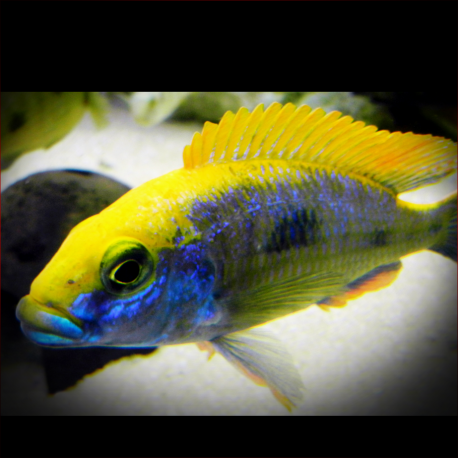More info
Datasheet
| Minimum Tank Size | 160 litres / 42.27 US gallons |
| Maximum Size | 16.0cm / 6.30inches |
| Temperature | 24°C / 75.20°F - 28°C / 82.40°F |
| Hardness | 10-25ºdH |
| pH | 7.6-8.8 |
Behaviour:
Otopharynx Lithobates, also known as the Sulphur-Headed Hap, is a peaceful species suitable for hard water communities, particularly in a Lake Malawi biotope aquarium. They coexist well with peaceful Haps, hard water rainbowfish, and some cyprinids but may prey on small fish. This species can be kept in groups but becomes territorial during spawning periods. Males exhibit vigorous mating behavior; it is recommended to have several females per male. They are not compatible with boisterous fish like Mbuna.
Aquarium Setup:
For Otopharynx Lithobates, a tank of at least 160 liters set up as a Lake Malawi biotope is recommended. The aquarium should feature rock piles forming caves with open water spaces in between, a sandy substrate, and hard water-tolerant plants like Anubias or Vallisneria (see table for specific parameters).
Feeding and Diet:
This species readily accepts various foods, with live and frozen options being essential components of its diet. Live and frozen varieties should make up the bulk of their meals to ensure proper nutrition.
Reproduction & Dimorphism:
Otopharynx Lithobates is a maternal mouthbrooder, spawning best in a species tank with one male and at least three females. The male, displaying vibrant colors, will court females aggressively. The female carries the brood for up to four weeks before releasing free-swimming fry. Males are larger and more colorful than females.
Habitat and Distribution:
Endemic to Lake Malawi, Otopharynx Lithobates is typically found between Domwe Island and Monkey Bay. Their habitat consists of caves and crevices in rocky areas within the lake. The species has been spotted at various locations including Thumbi, Mumbo, and Zimbawe Rock.

